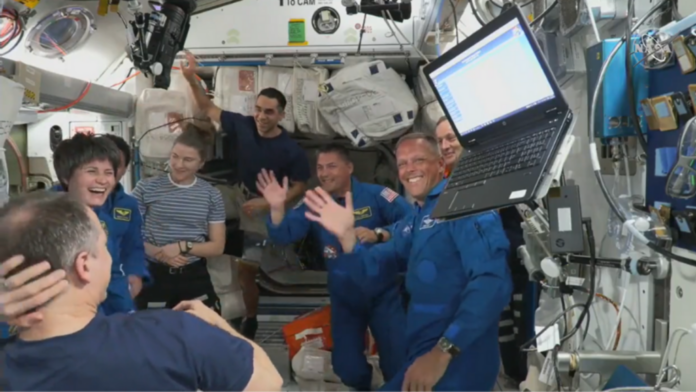Italian ESA astronaut Samantha Cristoforetti has begun her second mission, named Minerva, by arriving at the International Space Station (ISS) with her companions. The Freedom capsule docked at 1:37 am CEST on April 28, and Cristoforetti was accompanied by NASA astronauts Kjell Lindgren, Bob Hines, and Jessica Watkins. Upon opening the hatch between the ISS and the Freedom capsule, they were warmly received by a welcoming committee consisting of seven people, including NASA and ESA astronauts and cosmonauts from Roscosmos.
This mission marks eight years since the start of ASI’s Futura mission, and Cristoforetti returns to space to spend approximately five and a half months in the orbiting laboratory as the protagonist of ESA’s Minerva mission. She becomes the first European woman to embark on her second flight to space.
Giorgio Saccoccia, the president of the Italian Space Agency, highlighted the importance of space exploration for Italy and expressed his well wishes to Cristoforetti for her new adventure.
Cristoforetti will conduct numerous scientific experiments during her time in orbit, including six Italian Space Agency experiments. Three of these experiments were brought to the ISS by Cristoforetti herself. The first experiment, Antioxidant Protection (ASI Prometeo), aims to study the consequences of oxidative stress in orbit and develop therapeutic tools to protect the central nervous system. The Ovospace project investigates the impact of microgravity on the maturation and development of ovarian cells. The Evoo project focuses on studying the impact of space environment conditions on extra-virgin olive oil. Additionally, Cristoforetti will participate in the Suture in space project, assessing wound healing in microgravity.
She will also conduct two more Italian experiments that have been active on the ISS since 2019. The Acoustic Diagnostics experiment assesses the risk factors for astronauts’ hearing due to microgravity and noise aboard the ISS. The Nutriss experiment aims to maintain an ideal body composition in microgravity.
Lastly, the Lidal experiment, part of the Altea project, will assess the risk of radiation and develop a detector to measure radiation exposure for astronauts aboard the ISS.
Cristoforetti’s mission represents the ongoing excellence of Italy in space exploration and scientific research.












 Copyright 2023 All rights reserved.
Copyright 2023 All rights reserved.